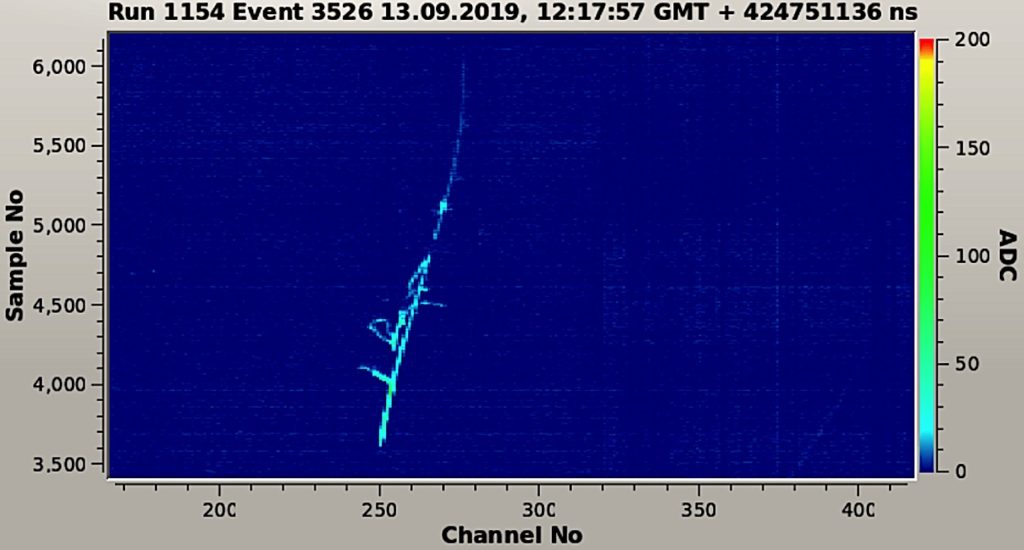Scientists began operating the dual-phase prototype detector at CERN at the end of August and have observed first tracks. Filled with 800 tons of argon, the detector is about the size of a three-story house.
The new technology would be used in addition to so-called single phase detectors that have been successfully operated during many years. But the new dual-phase technology may be game-changing, as it would significantly amplify the faint signals that particles create when moving through the detector.
“The single-phase technology is a proven method that will be used to build the first module for the DUNE detector,” said DUNE co-spokesperson Ed Blucher of the University of Chicago. “This new dual-phase technology provides a second method that has great potential to add to the DUNE detector’s capabilities.”
In a single-phase experiment, the particle detector is filled entirely with liquid argon. Wire planes and photo sensors submerged in the liquid argon record the faint signals caused when a neutrino smashes into an argon atom. The DUNE collaboration successfully began operating a large single-phase prototype detector at CERN in September 2018.
Scientists and engineers have now deployed on a large scale a dual-phase technology that uses liquid argon as target material and a layer of gaseous argon above the liquid to amplify faint particle signals before they arrive at sensors located at the top of the detector, inside the argon gas. Compared to the single-phase technology, this setup could yield stronger signals, which makes them stand out from background noise. It would thus enable scientists to look for lower-energy neutrino interactions.
Another advantage of the dual-phase technology: All the electronics for the data collection are located in the gas layer near the top of the detector and can be accessed via special chimneys that open from the outside, even as most of the detector is filled with argon, kept at a temperature below minus 184 degrees Celsius (minus 300 degrees Fahrenheit).
In contrast to the single-phase technology, the detector features a single active volume with no detector components in the middle of the liquid argon and a reduced number of readout elements at the top.
“This is a very elegant design that requires advances in high-voltage technology and argon purity,” said Fermilab Director Nigel Lockyer.
The prototype is a cube-shaped detector that is about six meters long in each direction. The collection of the electrons and readout of the signals is performed by innovative systems, each with a surface of nine square meters, individually suspended a few millimeters above the liquid level.
The dual-phase ProtoDUNE detector is but a small component of the detector the international DUNE collaboration plans to build in the United States over the next decade: a DUNE detector module will house the equivalent of 20 dual-phase prototype detectors and operate at a high voltage of up to 600,000 volts.
DUNE plans to build four full-size detector modules based on argon technology. They will be located a mile underground at the Sanford Underground Research Facility in South Dakota. Scientists will use it to discover whether neutrinos could be the reason that matter dominates over antimatter in our universe.
The outcomes of the test at CERN will help with the decision how many modules will feature the single-phase technology and how many will use the dual-phase technology.
The DUNE collaboration includes more than 1,000 scientists and engineers from over 30 countries in five continents: Africa, Asia, Europe, North America and South America.
Original post https://alertarticles.info


